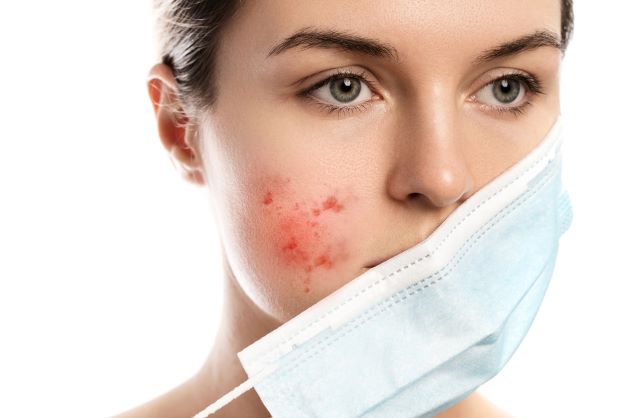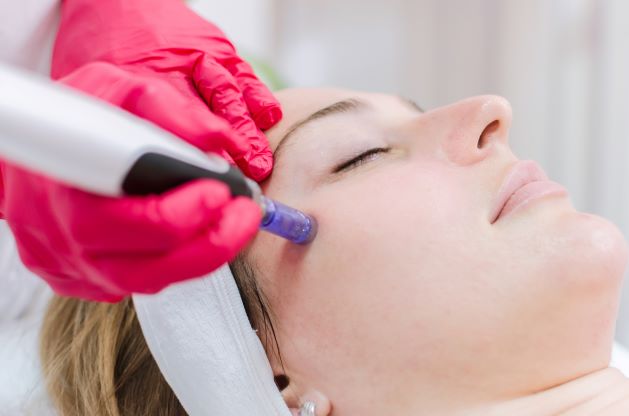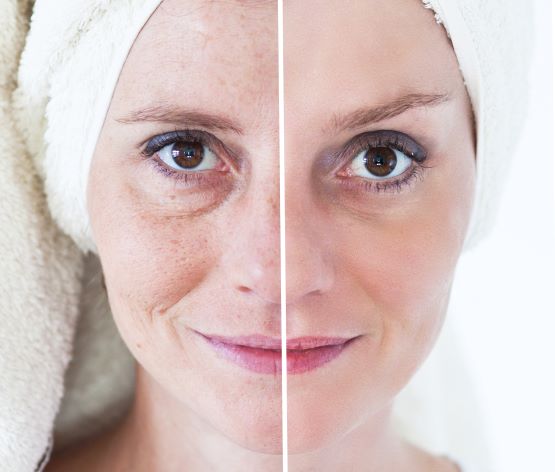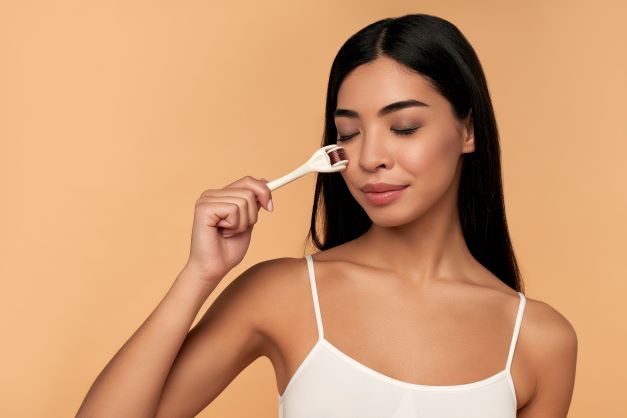People may find it weird that microneedling, a procedure that uses needles to puncture the skin, can actually make it smoother. But it has become very popular in the beauty industry in recent years.
In fact, a lot of celebrities swear by it and have used it as an anti-aging treatment. Social media channels include thousands of posts promoting this procedure. The hashtag #microneedling on Tiktok generates 384 million results! That’s how popular it is!
 Why is microneedling so popular?
Why is microneedling so popular?
Well, first of all, people love it because of its (almost) non-invasive nature. Although it does use needles, it is considered minimally invasive compared to other procedures such as Botox or fillers.
It is also relatively painless. And though there are some risks involved, these are considered to be minimal.
What is microneedling?
Microneedling is a minimally invasive skin rejuvenation procedure that uses tiny needles to stimulate collagen production in the skin. It is considered a simple treatment that can be done at home or in a clinic.
The procedure involves using a handheld device that has tiny needles that penetrate the epidermis and dermis layers of the skin. The microchannels created by these tiny needles allow oxygen and nutrients to reach deeper layers of the dermis.
This stimulates the production of collagen and elastin through processes called neovascularization and neocollagenesis. The process also improves blood circulation and promotes new cell growth. The overall result is an improvement in the skin’s texture and firmness.
Skin conditions that can be treated or improved with microneedling include:
- Mild to moderate acne scarring (new or old scars)
- Fine lines and wrinkles
- Skin texture and pore size
- Stretch marks
- Sun damage
Now that you know the basics about microneedling, let us answer some of the most common questions about this procedure.

Is microneedling painful?
Microneedling is relatively painless. Some people experience mild discomfort during the procedure. And, since the skin is being intentionally irritated, short-term redness is likely.
The needles used for microneedling are extremely small and sterile. Professional devices are designed to penetrate the skin at a depth of .5 to 2.0 mm.
The procedure usually takes about 15 minutes. Afterward, you should be able to return to work immediately.
According to Jennifer Boll, M.D., microneedling may not be overly painful, but it can be uncomfortable if done incorrectly. When microneedles are performed by a professional using a topical anesthetic to numb the skin, you will feel comfortable during the procedure. The wounds made by microneedles are shallow, so they’re easily healed.
How long does a microneedling treatment last?
Microneedling treatments last between six months and one year depending on the condition of your skin and whether there is ongoing damage that requires treatment. This procedure is usually done once every four to six weeks for about 15 to 30 minutes at a time.
How long does it take to see results from microneedling?
It takes about four weeks to see the results of microneedling. If you are considering your next treatment and schedule, you may want to wait for a couple of weeks after your first treatment to see how effective it was. It is typically recommended that you have a series of monthly treatments until your desired results are reached.
You should monitor your skin to see how it reacts to microneedling. If you notice any redness, swelling, or irritation, that lasts more than a day or so, consult the professional who treated you immediately.
 Take note that the results of microneedling treatments vary depending on the skin condition, the number of treatments, and the depth of penetration. Most patients notice some improvements after just one treatment. However, some patients need multiple treatments to achieve optimal results.
Take note that the results of microneedling treatments vary depending on the skin condition, the number of treatments, and the depth of penetration. Most patients notice some improvements after just one treatment. However, some patients need multiple treatments to achieve optimal results.
Can microneedling damage your skin?
There’s always the possibility of experiencing unwanted side effects when using a microneedling device. While it can be effective for treating acne scars, microneedling can actually spread bacteria in your skin, making breakouts even worse.
It is also possible to have pin point bleeding depending on the needle depth used. This is considered normal, though, because of the needles that have been inserted into the skin.
According to U.S. Food and Drug Administration, one of the most common risks of using microneedling devices is skin damage. This may include bruising, bleeding, tightness, redness, peeling, and itching. These signs of skin irritation usually go away without any additional treatment within a few days, but they may take longer if you develop an infection.
Common risks include stinging or burning when cosmetics or other skin-care products such as moisturizers or sunscreen are applied, dark spots on the skin, redness or swelling of the lips, lines on the face (especially around the eyes), a flareup of cold sores, swollen lymph nodes, or other signs of infection.
Microneedling may not always result in the desired aesthetic outcome that you are expecting. Usually, it takes more than one procedure to get the results you are seeking.
Additionally, any improvement in appearance might be temporary. Good skin care maintenance and additional procedures will be necessary over time.
How long does it take for collagen to rebuild after microneedling?
Collagen takes about two weeks to rebuild after microneedling. The skin takes around 4 weeks to fully heal. You should avoid sun exposure during this period.
If you do not want to wait until your skin heals completely, you can use retinol creams such as Retin A, which speeds up the healing process. You can also use a derma roller device which uses microneedles to create tiny holes into the skin at a much more shallow depth than professional microneedling devices. This stimulates the skin and encourages it to heal faster … reducing the need for fillers.

Is microneedling safe to try at home?
You can perform microneedling at home, but it will never be as efficient and effective as having the procedure performed by a professional.
Here are several reasons why:
1. Even if you know how to do the procedure, you should still consult with someone who has been professionally trained before performing the procedure DIY because you might have a skin condition that would be aggravated by microneedling.
2. Most people have small pores, which means they cannot see the needle well enough to be sure they don’t miss any spots.
3. Microneeding requires a trained technician to carefully apply the right needle depth and amount of force to each area of the face.
4. Professionals use more advanced microneedling devices. According to Westlake Dermatology, microneedles are typically shorter than .1 mm in length, whereas professional microneedling machines often use needles between .5 mm to 3 mm long.
5. The longer needles used in professional treatments create more controlled wounding, providing more noticeable results. Long needles can also be dangerous in amateur hands, which is why they should only be utilized by a professional.
6. When it comes to dermal rolling and microneedling, the technique is very important. YouTube videos and blog posts on DIY microneedling will never provide amateurs with the level of experience of a properly trained professional. This includes performing microneedling treatments on a variety of different skin types.
7. Incorrect microneedling can be risky as the process of creating skin injuries with a foreign object (needling tool) can introduce or spread bacteria into the skin. The risk of infection is especially high since the punctures in the skin can act as perfect channels for bacteria to lodge into the dermis. Professional microneedling minimizes this risk as professionals use sterilized tools, a well-prepared environment and carefully curated substances to improve results.
Is microneedling with PRP better?
According to Amani Medspa, the combination of microdermabrasion with platelet rich plasma (PRP) is more effective than either microdermabrading alone or applying PRP by itself. Both treatments alone are effective, but when used together they produce better results than either treatment alone.
Plasma Rich Platelet (PRP) therapy has become a popular treatment option for sports injuries. PRP is a blood derivative that contains growth factors and cytokines that promote healing and tissue repair.
 Platelets are tiny fragments of cells found inside our blood. They play a critical role in wound healing and tissue regeneration. When injured, platelets release chemicals that stimulate new cell growth. This helps speed recovery from injury or surgery.
Platelets are tiny fragments of cells found inside our blood. They play a critical role in wound healing and tissue regeneration. When injured, platelets release chemicals that stimulate new cell growth. This helps speed recovery from injury or surgery.
Both microneedling and platelet-rich plasma (PRP) are minimally invasive procedures that treat the skin. Microneedling stimulates collagen production, while PRP increases the number of stem cells in the skin.
Does microneedling really work?
Some of the most famous Hollywood stars, including Angelina Jolie and Kim Kardashian, use microneedling to get rid of fine lines and wrinkles, reduce or eliminate scars, and improve the way their skin appears and feels.

 Why is microneedling so popular?
Why is microneedling so popular?
